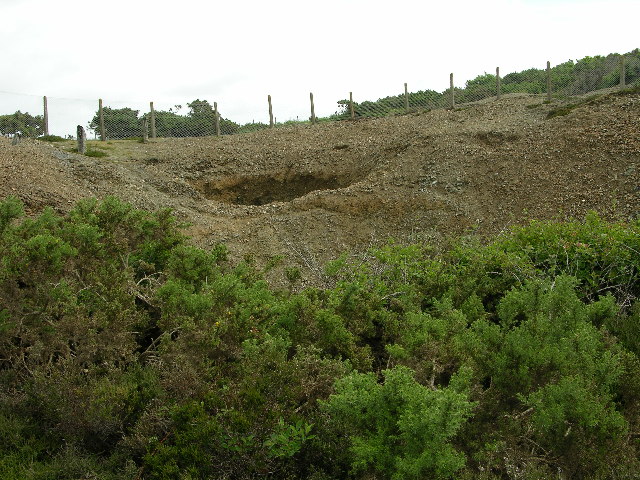Located about one mile northeast of Goldsithney village in St. Hilary parish, Cornwall, England. The area is renowned for its abundance of rare and unique secondary minerals, particularly Cu-Pb-Fe-Al arsenates, with Penberthy Croft being the type locality for several species including bayldonite, bettertonite, and penberthycroftite. Although there is some debate regarding Bayldonite’s type locality due to unclear documentation, specimens from Richard Talling supplied for description lacked precise locality information.
Additionally, Penberthy Croft mine marks the first recorded site for tin hydroxide minerals jeanbandyite and natanite in the British Isles, along with the discovery of segnitite. The land is owned by the St. Aubyn Estate, and access for visits or research requires prior permission through the estate’s agent.
The mine’s history dates back to the late 18th century when it produced approximately 3,000 tons of copper ore. Subsequently, mixed copper and tin mining occurred at greater depths, with lodes worked down to 53 fathoms below adit level. Operations ceased around 1840 until recent years when the cassiterite content of the dumps was evaluated during a period of high tin prices. In 1993, the site was designated as a Site of Special Scientific Interest (SSSI) by English Nature due to its mineralization.
Geologically, the mine is situated in Devonian metasediments, primarily consisting of lower-grade-greenschist facies slates of the Mylor Slates Formation, intersected by east-west striking metabasic rocks. The main Penberthy lode strikes east-west and is associated with rhyolite porphyry elvan dykes and cross course structures.
The mineralization at Penberthy Croft mine is complex, comprising multiple stages of polymetallic and hydrothermal deposition. This includes veins of pre-tectonic, metamorphic origin, high-temperature hypothermal-mesothermal veins rich in tin, copper, arsenic, and tungsten, as well as later-stage lower-temperature sulphide mineralization. Supergene oxidation and weathering have resulted in the formation of gossans with oxide and supergene enrichment zones.
The site hosts a diverse array of mineral species, with abundant microcrystals found in various areas of the old dumps, exhibiting brecciation, fracturing, silicification, chloritization, and carbonatization. A comprehensive mineralogical study conducted by Betterton in 2000 provides valuable insights into this unique locality, documenting its rich mineral diversity and geological significance.
1798-1825 1834-1840 1881-1883
External Links
Publications (2)
- Dines, Henry George (1956); BGS - Regional Memoirs - Metalliferous Mining Region of South West England Vol1, The; 567 pages
- NMRS; British Mining 43 - Memoirs 1991; pp.10,12,18,20,26,31.










